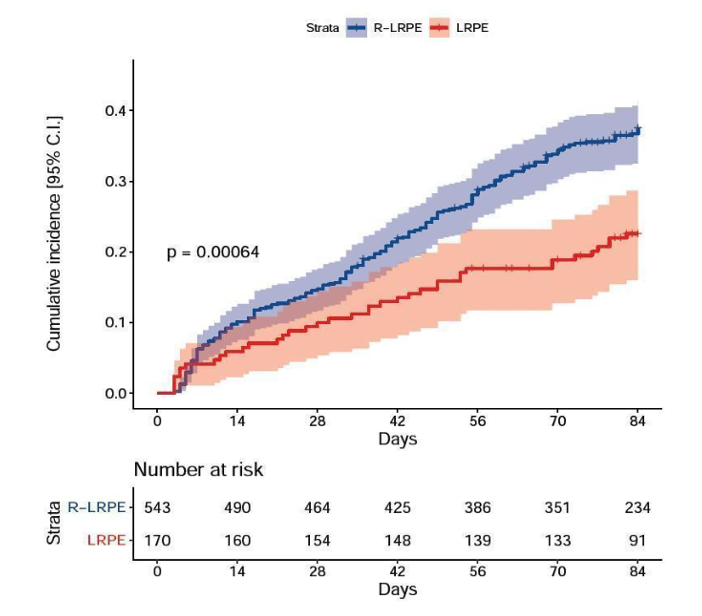The authors performed this randomized trial at four centers in Germany that are experienced and proficient at both approaches. The authors sought to identify whether patients undergoing robotic-assisted surgery would have an earlier return of continence. To this end, they determined their sample size with an assumption of a three-month early return of continence, utilizing an 80% power (beta = 0.2) and a significance level of 5% (alpha = 0.05). As a result, they determined a necessary sample of 782 patients. In the analysis presented here, the authors relied on data from 713 patients.
Following accrual, patients were randomized in a 3:1 fashion to robotic-assisted or conventional laparoscopic radical prostatectomy. Patients, but not surgeons, were blinded to treatment allocation. Patients were asked to record daily pad utilization. At three months, patients were unblinded. Follow-up continued for three years with assessment at 1, 3, 6, 12, 24, and 36 months post-operatively. Patients with no pad utilization for three consecutive days were deemed continent. The analysis was performed on a time to event basis.
Among 713 randomized patients, 527 underwent robotic surgery and 186 underwent laparoscopic prostatectomy. Perioperative outcomes were comparable between groups including nerve-sparing rates, prostate size/weight, margin status, pathological tumor stage, duration of surgery, and duration of catheterization. Patients who received robotic-assisted surgery had a significantly earlier return to continence, with much higher continence rates at three months postoperatively (log-rank test p=0.00064), at six months (p=0.004), and at 12 months (p=0.044).
Furthermore, complication rates were lower in patients undergoing robotic surgery.
The authors concluded that this represents the first multicenter, randomized data demonstrating improved continence for patients undergoing robotic-assisted radical prostatectomy.
Presented by: Jens-Uwe Stolzenburg, MD, PhD, Department of Urology, University of Leipzig, Leipzig, Germany
Written by: Christopher J.D. Wallis, MD, PhD, Urologic Oncology Fellow, Vanderbilt University Medical Center Contact: @WallisCJD on Twitter at the Virtual 2020 EAU Annual Meeting #EAU20, July 17-19, 2020


